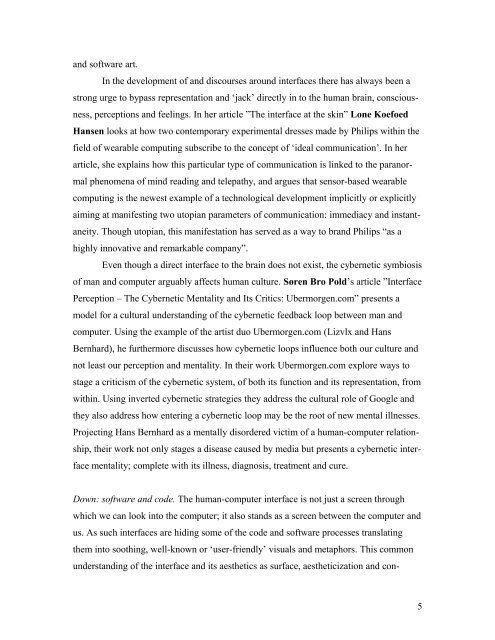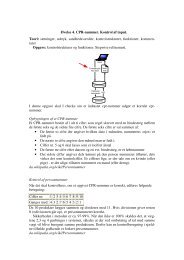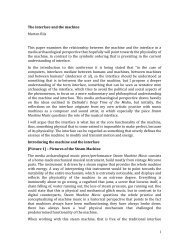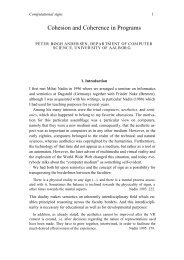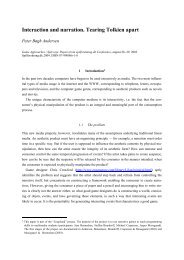introductory chapter - Digital Aesthetics Research Center
introductory chapter - Digital Aesthetics Research Center
introductory chapter - Digital Aesthetics Research Center
You also want an ePaper? Increase the reach of your titles
YUMPU automatically turns print PDFs into web optimized ePapers that Google loves.
and software art.In the development of and discourses around interfaces there has always been astrong urge to bypass representation and ‘jack’ directly in to the human brain, consciousness,perceptions and feelings. In her article ”The interface at the skin” Lone KoefoedHansen looks at how two contemporary experimental dresses made by Philips within thefield of wearable computing subscribe to the concept of ‘ideal communication’. In herarticle, she explains how this particular type of communication is linked to the paranormalphenomena of mind reading and telepathy, and argues that sensor-based wearablecomputing is the newest example of a technological development implicitly or explicitlyaiming at manifesting two utopian parameters of communication: immediacy and instantaneity.Though utopian, this manifestation has served as a way to brand Philips “as ahighly innovative and remarkable company”.Even though a direct interface to the brain does not exist, the cybernetic symbiosisof man and computer arguably affects human culture. Søren Bro Pold’s article ”InterfacePerception – The Cybernetic Mentality and Its Critics: Ubermorgen.com” presents amodel for a cultural understanding of the cybernetic feedback loop between man andcomputer. Using the example of the artist duo Ubermorgen.com (Lizvlx and HansBernhard), he furthermore discusses how cybernetic loops influence both our culture andnot least our perception and mentality. In their work Ubermorgen.com explore ways tostage a criticism of the cybernetic system, of both its function and its representation, fromwithin. Using inverted cybernetic strategies they address the cultural role of Google andthey also address how entering a cybernetic loop may be the root of new mental illnesses.Projecting Hans Bernhard as a mentally disordered victim of a human-computer relationship,their work not only stages a disease caused by media but presents a cybernetic interfacementality; complete with its illness, diagnosis, treatment and cure.Down: software and code. The human-computer interface is not just a screen throughwhich we can look into the computer; it also stands as a screen between the computer andus. As such interfaces are hiding some of the code and software processes translatingthem into soothing, well-known or ‘user-friendly’ visuals and metaphors. This commonunderstanding of the interface and its aesthetics as surface, aestheticization and con5


